Last Updated on May 31, 2025 by Jocelyn
Want bigger, sweeter cantaloupes? Companion planting can help. Place marigolds nearby to repel pests. Add bush beans to improve soil.
Borage attracts pollinators. Other good companions are basil, mint, oregano, lettuce, corn, nasturtium, wildflowers, radishes, collard greens, and bee balm.
These plants protect your cantaloupes and support better growth. Avoid planting near potatoes, cucumbers, or squash. They compete for space and can spread disease.
This method works in all regions, including North America, Australia, and Europe. It keeps your cantaloupes healthier with less effort.
Table of Contents
ToggleCantaloupe as Companion Plants
Cantaloupe can be a great addition to your garden. It offers several advantages and disadvantages when planted with other plants. Here’s a quick look:
| Advantages | Disadvantages |
| Prevent soil erosion | Use a lot of water |
| Protects roots of other plants | Drier conditions can cause cantaloupes to struggle |
| Dense leaf coverage protects dirt from wind and rain | Can drown neighbors during a drought |
| Hale’s Best Jumbo is a drought-tolerant variety | Vines may cause crowding and need control |
| Enhances soil health and nutrient uptake | Requires trellises and twine to manage vines |
| Repel pests naturally with chemicals and scents | Can attract too many pests without proper management |
Explore companion planting further with my in-depth guides:
The Best Companions for Cantaloupes
Choosing the right plants to grow with your cantaloupes can boost your garden. These plants help your cantaloupes by keeping pests away and improving the soil. Plus, they can lead to a bigger, tastier harvest!
1. Marigolds
Marigolds serve as excellent companion plants for cantaloupes due to their ability to repel pests and mosquitoes, thereby protecting melon vines. Grow in well-drained, loamy soil with a pH range of 6.0 to 7.0, they require full sunlight and consistent moisture.

Marigolds’ size can be controlled by planting them close to cantaloupes, preventing them from inhibiting vine growth. Besides acting as a trap crop for aphids, they attract pollinators like bees and butterflies, enhancing garden biodiversity.
2. Beans
Beans flourish in well-drained soil and sunlight. These leguminous plants fix nitrogen, boosting soil vitality. Cantaloupe, which are heavy feeders, benefit from the sustenance and greenery provided by beans in the garden.
Planting beans in succession keeps the soil alive. As beans grow, their roots fix nitrogen. When they die and their roots decay, nitrogen returns to the soil. Bush and pole varieties work well, with pole beans trained to climb trellises or cattle fence panels, keeping the ground covered for cantaloupe.
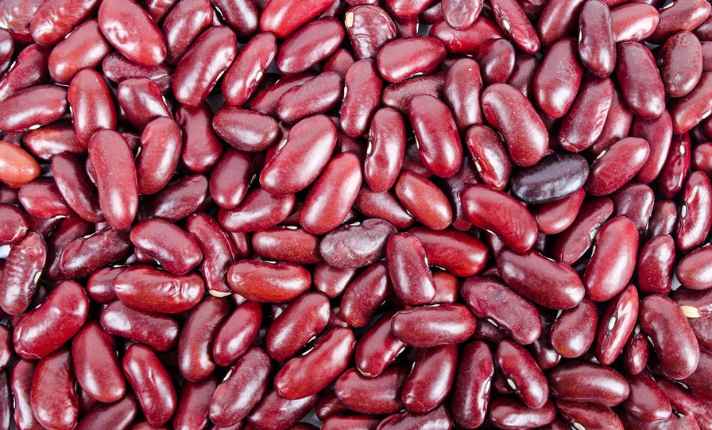
Cycle bean plants by cutting them at the soil level, leaving the roots to feed the next crop. Bush beans are ideal because their shorter stature won’t block the sun from the melon crop. These legumes are rockstars, naturally fertilizing your melons all season.
3. Collard Greens
Collard greens pair well with cantaloupes. Their upright growth leaves room for the sprawling cantaloupe vines, making the most of your garden space. Additionally, collard greens strengthen soil health and structure.

They also provide pest deterrence and can deter pests that might affect cantaloupes. Acting as a trap crop for aphids like radishes, they offer extra protection. You can plant collard greens as a border around the cantaloupe plants or interplant in the rows.
4. Bee Balm
Bee balm is a beautiful, brightly-colored flower that you should consider planting near cantaloupe. This flower helps attract beneficial pollinators like bees and butterflies to your garden. These pollinators are essential for pollination and help with the fruit set of cantaloupe flowers.
Additionally, bee balm offers some protection from pests by bringing in natural pest predators. Increasing the number of bees visiting, enhances the pollination process.
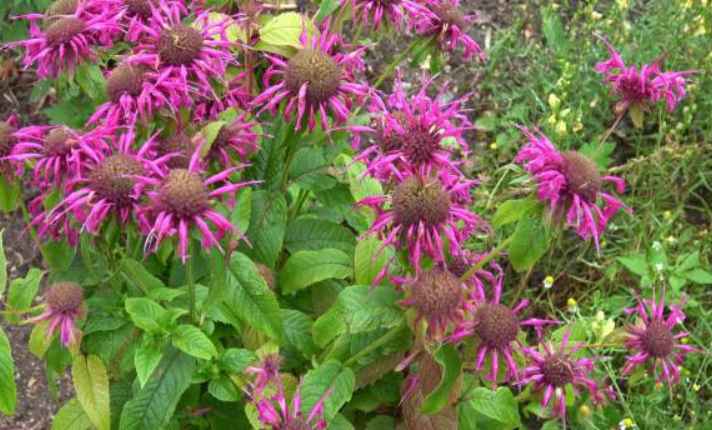
Bee balm also supports biodiversity and ecosystem balance by attracting beneficial predatory insects that control pest populations, contributing to a balanced garden ecosystem.
5. Corn
Corn works well alongside cantaloupe. While corn grows tall, you can position it carefully to avoid shading your melons. Corn grows best in rich, well-drained soil and enjoys the warmth of sunlight.

Corn is a helpful companion for cantaloupes, as it shades the soil and reduces weed growth, which supports both plants. While corn is usually grown in the ground, you can also grow it in a large pot with proper care.
This way, you can still enjoy the benefits of corn as a companion plant for your cantaloupes, even in smaller spaces.
6. Nasturtium
When you plant Nasturtium with your cantaloupes, it’s a smart move. These beautiful flowers have a rounded, bushy growth habit that looks gorgeous in your garden. Nasturtium blooms attract beneficial insects like hoverflies, which eat aphids. This makes them very effective in helping to eliminate these pests.

Aphids are drawn to nasturtium flowers, keeping them away from your melons. If you plant nasturtium in rows or corners, it gives your cantaloupe vines room to grow without getting tangled. Plus, it helps with pests and adds pretty flowers to your garden.
7. Lettuce
Lettuce makes an ideal match for cantaloupe and other melons in your garden. This easy, fast-growing plant is perfect for gardens and can be interplanted with melon seeds. When cantaloupe seedlings are a few inches tall, you can harvest the young greens of lettuce.

Lettuce grows best in cool weather, and its crisp leaves are a great addition to any garden. For the best results, plant it in well-drained, fertile soil with a pH between 6.0 and 7.0. Lettuce likes partial shade and needs consistent moisture to keep its tender leaves and heads healthy.
You can also add other greens like arugula and spinach for more variety. They share similar watering needs with lettuce, making them a perfect match in your garden
8. Radishes
Pairing radishes with cantaloupes is smart. Radishes grow fast, cover the ground, and suppress weeds. Plant them with your cantaloupe seeds, and harvest the radishes before the melons need space to spread.
Radishes have green leaves that attract predatory insects like ladybugs and lacewings. These insects help control pests by eating aphids.
In my garden, I’ve noticed how well radishes grow in loose soil with a pH range of 5.5 to 7.0. They love sunlight and consistent moisture, which helps their rapid growth and vibrant foliage.
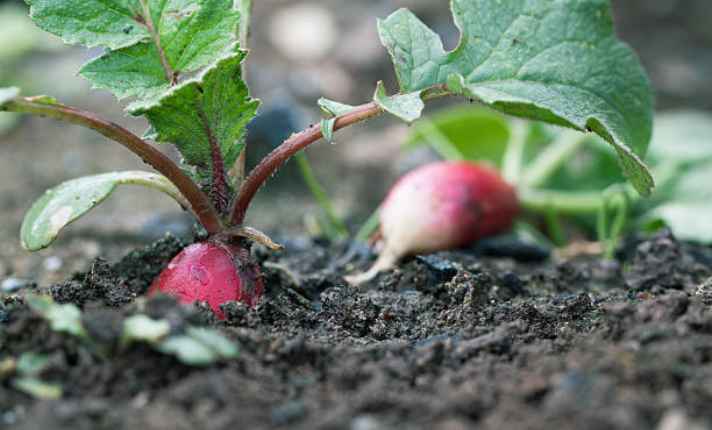
Radishes also offer great benefits to neighboring plants by breaking up compacted soil and improving aeration. During the growing season, you can use radishes as a trap crop for aphids near your cucurbit vines.
As melons provide shade, you can grow radishes underneath to keep them cool. Planting in steps gives you fresh radishes all season long.
9. Oregano
Oregano works well with cantaloupe. It can grow up to two feet tall and 18 inches wide if not trimmed. Regular harvesting keeps it in check and benefits your melons. It’s best to plant oregano in a container or away from cantaloupe roots since it prefers dry soil.
This herb helps keep pests away while attracting beneficial insects to your garden. Oregano can handle various conditions, especially well-drained, sandy, or loamy soil with a pH between 6.0 and 8.0.

It needs plenty of sunlight and occasional pruning to keep its foliage healthy and its growth compact. By planting oregano near cantaloupe, you enhance the overall health of your garden by promoting biodiversity and supporting neighboring plants.
10. Wildflowers
Planting wildflowers in your melon patch is a smart move. Native flowers attract bees and butterflies, which boosts pollination. More pollinators mean better yields and a bigger melon harvest.
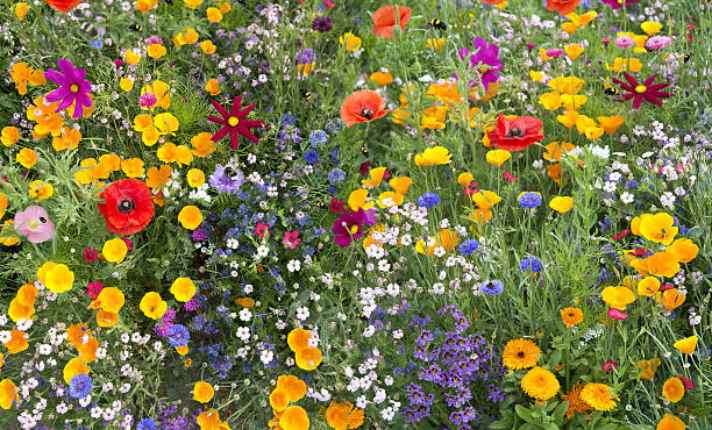
Wildflowers bloom abundantly but don’t last long, making them a great fit for your garden. Adding native wildflowers around your melon plants can boost their growth and make your garden even more vibrant. Place them strategically for the best results.
11. Mint
When growing cantaloupe, using mint as a companion plant can be very helpful. Mint has vigorous growth habits, so it’s best to keep it in a container to control its spread.
Mint is a good plant to have near cantaloupe because it helps repel pests like aphids, squash bugs, whiteflies, ants, and flea beetles.

Some gardeners say mint boosts soil, but it spreads fast and can be hard to control. I planted it once, loved the smell, but it took over quickly.
If you plant mint, be cautious—it’s best to keep it in a pot to avoid a garden takeover.
12. Basil
Basil pairs nicely with cantaloupe plants. This fragrant herb helps deter pests like thrips, which can harm your melons.
Basil can grow tall and bushy, but regular pruning keeps it in check and prevents it from overwhelming your cantaloupes.

It also has a shallow root system that won’t compete with the roots of cantaloupes. You can even grow basil as a container plant and place it near your melon patch to help protect your melons.
Having basil as a cantaloupe neighbor not only keeps your melons safe but also adds a pleasant scent to your garden.
13. Borage
Borage benefits cantaloupe plants by adding potassium and calcium to the soil as it decomposes. You can chop and drop borage to enrich the soil with organic material, keeping these nutrients available for other plants.
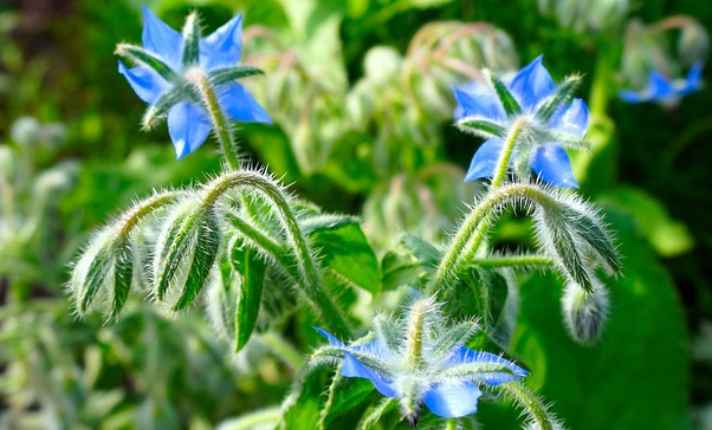
Plant scientists recommend using low-nitrogen and high-potassium fertilizers when your plants produce flowers because potassium is responsible for fruiting and flowering.
Borage also attracts beneficial insects like pollinators and predators to your garden, helping you get more fruit and fewer pests.
Companion Plants to Avoid Near Cantaloupes
When planting cantaloupes, it’s important to be careful about which plants you put nearby. Some plants can cause problems for your cantaloupes.
They might take away resources like water and nutrients, which can hurt the growth of your cantaloupes.
Other plants might attract pests that can damage your cantaloupes or spread disease. These issues can affect the health of your cantaloupes and make it hard for them to grow well.
1. Potatoes
Avoid planting potatoes near cantaloupes because they compete for nutrients and can spread diseases. Their root systems take up a lot of space, which can hinder cantaloupe growth and attract garden pests like aphids.

2. Cucumbers
When growing cantaloupes and cucumbers together, they can attract pests like cucumber beetles and squash bugs, which harm both plants. They also share diseases like powdery mildew that spread easily if planted too close.
Additionally, both need a lot of sunlight, and one might overshadow the other, causing poor growth. Therefore, it’s best to keep them apart to avoid these issues.
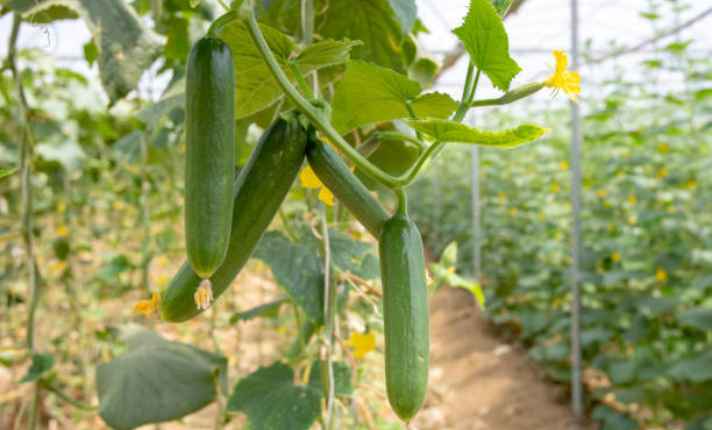
3. Squash
Growing squash alongside cantaloupe can benefit both plants. Squash and cantaloupe are like garden buddies, helping each other out.
Squash plants, part of the same family as cantaloupe, create a cozy environment, deterring harmful bugs from bothering the sweet melons.
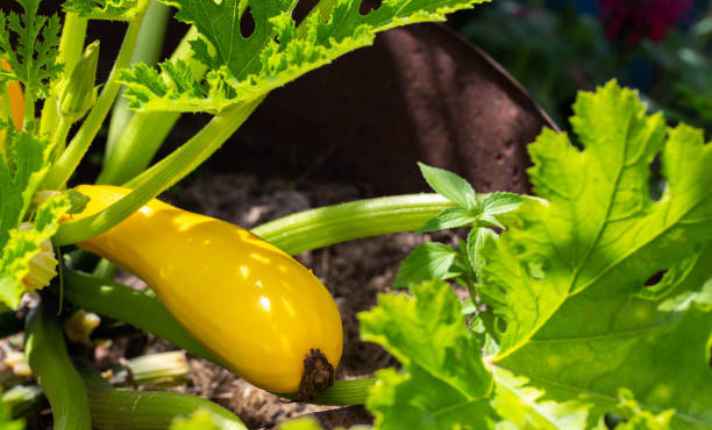
With their sprawling vines, squash plants act as a natural shade for cantaloupe, ensuring they get just the right amount of sunlight. This friendly pairing not only promotes healthy growth but also enhances the garden’s biodiversity.
Want to learn more about companion planting? Check out my guides:
Companion Planting Tips
Planning to plant companions with your cantaloupes? Here are some key tips for a successful garden. With the right approach, you’ll enjoy a bountiful harvest.
| Tips | Details |
| Implementing | Requires thoughtful planning. |
| Spatial Arrangement | Plant cantaloupes in proximity to their companions, ensuring space to grow without overcrowding. |
| Timing | Plant companion plants at the right time in relation to cantaloupes. |
| Monitoring and Maintenance | Regularly observe plant interactions. |
| Observation and Adjustment | Be observant and ready to make adjustments. |
| Water and Nutrient Needs | Consider the water and nutrient requirements of neighboring plants. |
| Root Competition | Some plants have invasive root systems that can encroach on the root space of cantaloupes, impeding their growth. |
| Shade and Sunlight | Avoid planting tall or dense plants near cantaloupes to avoid blocking sunlight. |
| Strategies for Garden Planning | Before planting, research and plan your garden layout. |
FAQ’s
Q: What Are the Best Growing Conditions for Cantaloupe?
A: Cantaloupes grow best in sunny, fertile, well-drained soil. Before planting, add organic matter and fertilizer to the area. Plant 4-6 seeds per mound, 1-2 inches deep, with mounds spaced 4 feet apart. Ensure the soil is at least 65°F.
Q: What Is the Best Support for Cantaloupe?
A: When growing cantaloupe, providing strong support is essential. A sturdy trellis offers solid backing. For smaller melons, netting or wooden A-frames work well.
For heavier varieties, I suggest using cattle panels or thick-gauged field fencing. This method has kept my cantaloupes growing strong and healthy in my garden!
Q: What Eats Cantaloupe Plants?
A: When growing cantaloupe, keep an eye out for the striped cucumber beetle. This pesky insect feeds on cucurbits like cucumber, squash, watermelon, and cantaloupe.
Q: What Is the Best Fertilizer for Cantaloupe?
A: When you grow seeded or transplanted cantaloupes, it’s important to apply the right fertilizer. Use a pop-up fertilizer to enhance early growth. For every acre, use 100 to 150 pounds of fertilizer. This is especially helpful in cool or cold soils during the early spring.
Make sure to place the fertilizer 2 to 3 inches to the side of the row and 2 to 3 inches below the seeds or roots.
Q: How Do You Increase the Yield of a Cantaloupe?
A: Cantaloupes grow best in well-drained, warm, sandy, or silt loam soils. A variety of soil types can be used. For an early harvest, lighter soils with good air drainage are important. Heavier soils can produce higher yields and are better for later-season production.
Conclusion
Companion planting is an effective method for boosting cantaloupe growth. Pairing bush beans, marigolds, and bee balm creates a supportive environment that improves soil health, repels pests, and attracts pollinators.
This approach increases your harvest while promoting sustainable gardening practices. Challenges may arise, but the satisfaction of growing fresh, homegrown cantaloupe makes the effort worthwhile.
Explore how these plant partnerships can benefit your garden and help you achieve better results. Enjoy the process and discover the many rewards of nurturing your plants together.

